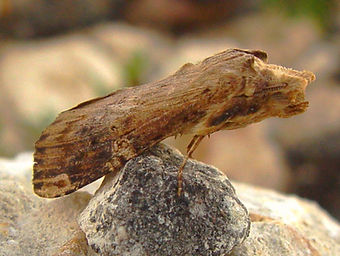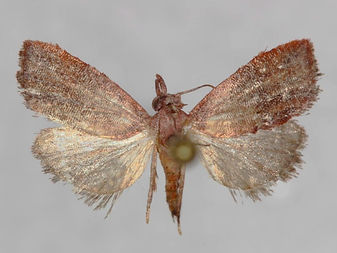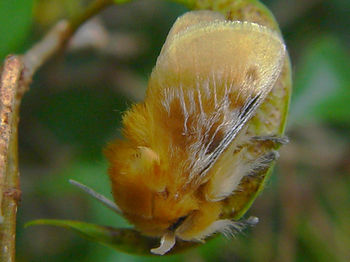

Moths of the Florida Keys
Exploring the moths of the Florida Keys has been one of the most rewarding things that I have ever done. Because of the nocturnal nature of most moth species, it makes observing them in their natural habitat nearly impossible. For this reason, very little is known about moths when compared to the volumes that have been written about butterflies. The truth is, there are probably 5 times more moth species than there are butterfly species in any given habitat making moths an increadible "indicator" group when attempting to determine the health of an ecosystem. Despite the common thought that "moths are little, brown and colorless" some of the most vibrantly colored Lepidopterans in the Keys are moth species. I think the coolest thing about this project is that there have been so few Lepidopterists that have surveyed the moths of the Keys that the frequency of finding "something to write home about" is very high. Just about every time we put lights out, we find a new species to the project and we have been at it since 1998. The hope for this website is to be a conduit of information about the moths of the Florida Keys. Our hope for this site is to be a place where others can learn more about the diversity that exists in the Florida Keys as well as be an easy place for anyone to attempt to identify a moth they've seen or photographed. These creatures are so seldom seen up close so through this web site we hope to provide that opportunity for anyone who would enjoy. If any of our viewers have any data that can add to this site, we welcome you to contact us.
TO EXPLORE THE MOTHS OF THE FLORIDA KEYS BY FAMILY, CLICK ON THE IMAGES BELOW
All photographs are copywrited property. Please contact us for permission to use.
Microlepidoptera
(sps # 0372-3694)
Prepyraloid moths and other Micros
(sps #'s 3695 - 4933)
Geometrid moths
(sps # 6332-7683)
Sphinx Moths
(sps # 7772-7840)
Saturnid and Lasiocampid Moths
(sps # 7704-7723.1)
Notodontid Moths
(sps # 7947-7984)
Arctiid Moths
(sps # 8105-8286)
Noctuid Moths Page 1
(sps # 8368-8879)
Micro's
This group of species that we are calling "Microlepidoptera" consists of multiple families that come in a multitude of shapes, colors and patterns. The unifying characteristic of the species in this group is their small size. The smallest Lepidopteran species in the Keys are from this group. The families included in this group are the following:
(0001-0854) - Micropterigoidea-Tineoidea
(0855-1075) - Oecophoridae – Elachistidae
(2312-2512) - Copromorphoidea-Yponometoidea
(2513-2626) - Sesiidae
(2627-2700) - Choreutidae-Cossidae
(2701-2866) - Tortricidae - Olethreutinae
(3592-3694) -Tortricidae - Archipini
Prepyraloid moths
This group is a variable group of micro families including the Crambidae group.
4618-4702 : Pre-Pyraloid Families Zygaenidae/Megalopygidae-Limacodidae
4703-4933 : Crambidae: Scopariinae-Evergestinae
Geometrids
While at rest, geometers hold their wings flat to the surface on which they are resting and have long thin abdomens. Many species appear to look like butterflies. They are typically nocturnal, males with hairy antennae and females without hairs on antannae. Many Geometrids are highly variable in their wing patterns. Many species are very cryptic and heavily camouflaged with wavy wing patterns. They are also very delicate and if handled, quickly loose their scales and wings tear quite easily. Larvae are known as "inch-worms"
Saturniids and Lasiocampids
Saturnids, (also known as "silk moths") include the largest species of moths in the world. Adults are characterized by large size, heavy bodies covered in hair-like scales. They have lobed wings, small heads and do not feed as adults due to their extremely small mouth parts. They often have translucent eyespots or "windows" on their wings. Males have larger, broader antennae which are typically "feathery" looking. There are only three species of Saturnid moths breeding in the Keys.
Sphingidae
Sphingids are a family of moths (Lepidoptera), commonly known as hawk moths, sphinx moths, and hornworms. They are easily distinguished from other moths for their fast, hovering flight (typically at flowers) and their impressive "jet-like" appearance while at rest. They have narrow wings and streamlined abdomens. They are sometimes mistaken for hummingbirds because of their appearance in flight. They have been much studied for this flight ability, especially their ability to move rapidly from side to side while hovering. Their larvae are characterized by having a distinct horn on near the rear end.
Notodontidae
Notodontids are heavy-bodied and long-winged. The wings are held folded over the body creating a very cryptic appearance while at rest. They are typically brown in color. The adults are often called prominents because of a tuft of hair on the forewing which protrudes upwards at rest. Adults do not feed. There are 7 species of notodontids that we have found in the Keys. Certain species can be quite abundant at lights.
Arctiid moths
Arctiids or tiger moths, often times have bright colors. This family includes other groups such as footmen, lichen moths, and wasp moths. Caterpillars are usually "hairy" and are very active. When disturbed, many caterpillars quickly "jump" off where they are resting and fall to the ground while curling into a ball. While most Arctiids are nocturnal, there are many species that fly inthe day time or are more active at twilight hours. Adults visit flowers. Arctiids have a tymbal organ on the metathorax which produces sounds used in mating and for defense against predators. When disturbing certain species, such as "the faithful beauty" (Composia fidelissima) you can hear this noise quite clearly.
Noctuidae
Noctuids or owlet moths are a family of robustly built moths. this is the largest family of Lepidoptera. Many noctuids are drab in color most of which having brown colors however there are some brightly colored species. Catacoline Noctuids are drab on the forewing but their hindwings are brightly colored or are patterned with white or yellow (such as in the Melipotis genus) Most noctuids are rapid in flight and fly at night and are usually attracted to artificial lights. Many noctuids feed on flowers. Some species are readily attracted to rotting fruit. We use an apple/banana mix with sugar and water during the dry months. This is a very effective way to find unusually seen species.
UFO's
UFO's
The following series of pictures are a collection of moth specimens that have been found which we have not yet confirmed an identification for. If someone has what they believe is an identification for one of our "UFO's" please email us stating the picture name and the proposed identification.
Various Micro Familes
(sps #'s 5299 - 6295)
Pyraustinae
(sps #'s (4934 - 5298)
Pyralid moths
Pyralids or snout moths make up one of the largest families of Lepidoptera. They are typically small moths that often are seen flying in grassy areas. Their legs are long and their palpi are usually long and covered in scales. They typically rest with their wings open and their abdomen elevated. When at rest they appear triangular.
4934-5298 : Pyraustinae
Various micro moth familes
This group is a hodge podge of various families of micros which include some of the larger species in the "micro" group, some of which have Noctuid characteristics.
5299-5509 : Schoenobiinae-Crambinae
5510-5650 : Pyralidae: Pyralinae-Gallerinae
5510-5650 : Pyralidae: Pyralinae-Gallerinae
6076-6088 : Thyrididae-Hyblaeidae
6089-6234 : Pterophoridae: Plume Moths
6235-6255 : Drepanoidea
Noctuidae
Noctuids or owlet moths are a family of robustly built moths and is the largest family of Lepidoptera. Many noctuids are drab in color most of which having brown colors however there are some brightly colored species. Catacoline Noctuids are drab on the forewing but their hindwings are brightly colored or are patterned with white or yellow (such as in the Melipotis genus) Most noctuids are rapid in flight and fly at night and are usually attracted to artificial lights. Many noctuids feed on flowers. Some species are readily attracted to rotting fruit. We use an apple/banana mix with sugar and water during the dry months. This is a very effective way to find unusually seen species.
Noctuidae
Noctuids or owlet moths are a family of robustly built moths and is the largest family of Lepidoptera. Many noctuids are drab in color most of which having brown colors however there are some brightly colored species. Catacoline Noctuids are drab on the forewing but their hindwings are brightly colored or are patterned with white or yellow (such as in the Melipotis genus) Most noctuids are rapid in flight and fly at night and are usually attracted to artificial lights. Many noctuids feed on flowers. Some species are readily attracted to rotting fruit. We use an apple/banana mix with sugar and water during the dry months. This is a very effective way to find unusually seen species.
Noctuid Moths Page 2
(sps # 8880-9198)
Noctuid Moths Page 3
(sps # 9199-11071)












